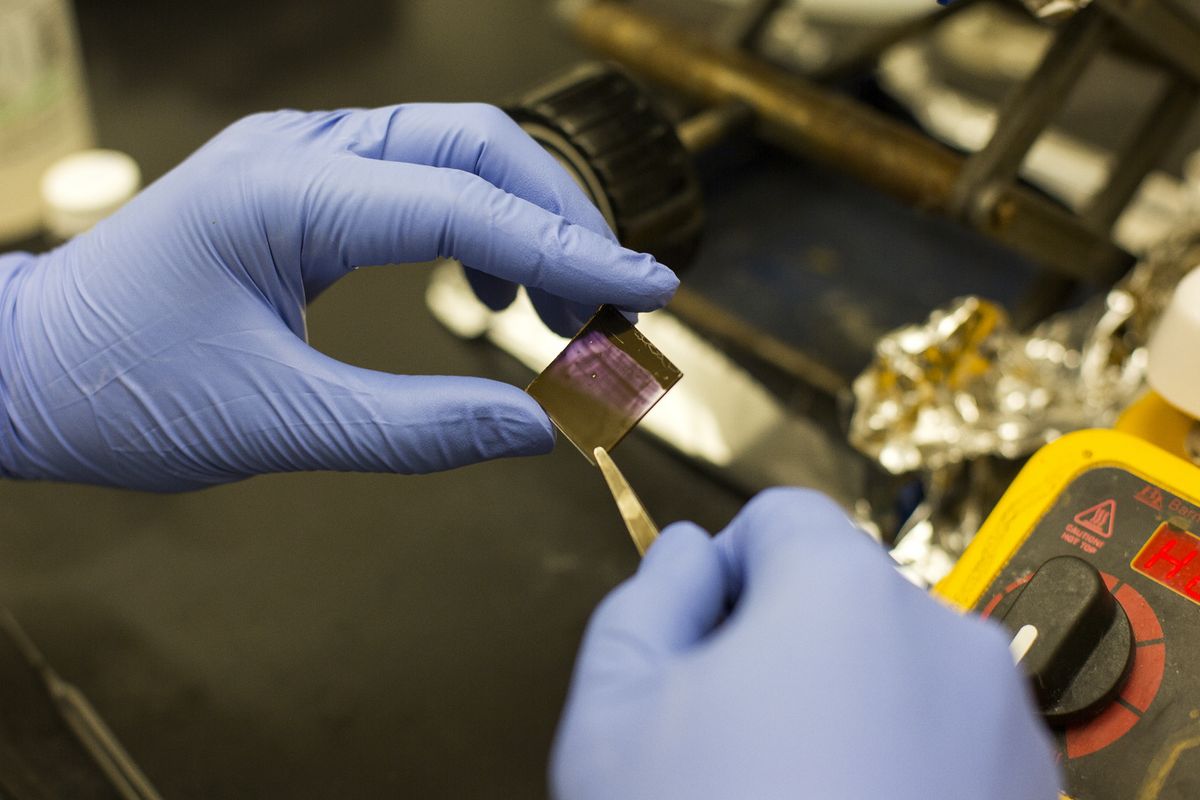‘Paintable’ Electronics Paves Way for Cheaper Gadgets

Researchers in the field of materials science are using a new technique to create “paint-on” plastic electronics that can be used to make popular gadgets less expensive and better for the environment.
Scientists at the University of Michigan (U-M) recently announced that they’ve discovered a way to make unruly semiconducting polymers- like those used in computer processors and LED displays- more manageable.
Most semiconductors used in modern electronics are inorganic, or based on materials other than carbon, like silicon or copper. While inorganic semiconductors do an excellent job of spreading a charge through an electronic device, they’re costly and impossible to produce without specialized equipment.
Organic and plastic semiconductors like the ones used by the U-M researchers, on the other hand, can be prepared on a basic lab bench. However, scientists have found that they’re not as efficient at carrying a charge through an electronic device as their inorganic brethren. Or at least, such was the case until recently.
The new “paintable” semiconducting polymers can be brushed over a surface to create a thin-layer film capable of carrying an uninterrupted charge.
“It’s a big breakthrough,” Jinsang Kim, a professor of materials science and engineering at U-M, said in a statement. “This is for the first time a thin-layer, conducting, highly aligned film for high-performance, paintable, directly writeable plastic electronics.”
The decision to create a liquid polymer solution led to some interesting opportunities for innovation by Kim and his fellow researchers. First, they designed the polymers to be slippery because, as Kim explained, ordinary polymers glom together like “flat noodles left in the fridge.
Sign up for the Live Science daily newsletter now
Get the world’s most fascinating discoveries delivered straight to your inbox.
By choosing polymers with a natural twist, the team was also able to keep the polymers from sticking to one another inside the solution. But researchers then had come up with a way for the polymers to align with one another to create a charge-carrying freeway for energy being passed through the semiconductor. To achieve this, they designed the polymers to untwist as the solvent dried up.
To further stop the polymers from sticking together, the researchers added flexible arms to the sides of the flat, wire-like polymers. The arms helped each polymer push its neighbors away and remain isolated in the solution. When a paintbrush was dragged across the solution, the polymers lined up in the direction of the applied force.
After painting the polymers onto a piece of plastic film, the U-M team built “paintable” semiconductor into a simple transistor, like that used to make computer processors. And the device worked.
“By combining the established molecular design principle with a polymer that has a very good intrinsic charge carrier mobility, we believe it will make a huge difference in organic electronics,” Kim said.
Kim also said he believes the semiconducting film will be useful for making electronics such as those used in LED displays or the light-absorbing coatings for solar cells.
Follow us @TechNewsDaily, on Facebookor on Google+.

Elizabeth is a former Live Science associate editor and current director of audience development at the Chamber of Commerce. She graduated with a bachelor of arts degree from George Washington University. Elizabeth has traveled throughout the Americas, studying political systems and indigenous cultures and teaching English to students of all ages.










